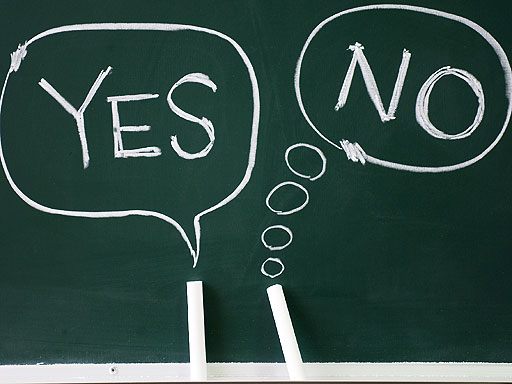[Audio] Yes & No in Vietnamese. How to Say Yes & No in Vietnamese?
The next lesson, I will teach you how to say Yes and No in Vietnamese. In English, these words are very easy, just “Yes” and “No”. But in Vietnamese, they’re much more complicated. “Yes” can be “Dạ”, “Vâng”, “Có”, “Đúng”,…. And “No” can be “không”, “chưa”,… OMG, how come there’re so many? Yes, I know, that why I’m here. I will teach you when you should use this word, and when should use the others. Let’s get started!

Contents
How to say NO in Vietnamese?
“No” is easier to say in Vietnamese, the most popular meaning of “No” is “không”:
“Không” is usually used in informal situation, when the person talking with you are not older than you (or just few years older). In other cases, when that person is many years olther, you should say “dạ không”:
“Dạ” has no meaning in this case, but it’s added before “không” to express the respect to the people who you’re talking with.
For more formal situation, you can add “cám ơn” (thank you) at the end when someone invite or give you something but you don’t want to, the phrase becomes “dạ không, cám ơn”:
>> Also learn more: how to say thank you & you’re welcome in Vietnamese?
There are also few more cases of No, but it’s quite difficult with a foreigner, so you can use “không”, “dạ không” and “dạ không, cảm ơn” for every case.
How to say Yes in Vietnamese?
Saying No in Vietnamese is easy, but Yes will be much harder. For esier, I will teach you the most simple cases, enough for basic conversations and locals can understand you. Basically, Vietnamese divides Yes into 2 cases.
1. When you talk with younger people, or people about same age as you. In this case, we say “ừ”:
2. When you talk with many years older people, you should say “vâng” to show the respect:
Advanced case of Yes & No in Vietnamese
As I said when we start, Yes can be “có”, “rồi”, “vâng”,… and No can be “chưa”, “không”,…. So how to know when you should use this word, and when use another?
The first thing, you have to distinguish the type of Yes/No questions. There’re few popular cases:
1. The question is end with “à” or “không”
In this case, you will use “ừ” or “vâng” for Yes, and “không” for No like above.
Example, “bạn thích ăn phở phải không?” (do you like to eat pho):
or “đây là bún chả phải không?” (is this bun cha):
or “chị sống ở Hà Nội à?” (do you live in Hanoi):
3 these quetions have “không” or “à” at the end, so you will answer “ừ” or “vâng” for Yes, or “không” or “dạ không” for No like I taught above.
2. The question is end with “chưa”
People make this type of quetion want to ask you “have you done something?” In this case, you will use “rồi” for Yes:
, and “chưa” for No:
For example, with the question “em đã đến Sapa chưa?” (have you came sapa yet):
or “bạn ăn tối chưa?” (have you had dinner yet).
Two these quetions have “chưa” at the end, so you will “rồi” for Yes, and “chưa” for No.
Conclusion
There’re many more complicated cases you have to learn if you want to live in Vietnam for long time, or “worse” – marry a Vietnamese. But if you visit Vietnam for only few days or weeks, you just need to know the basic cases of Yes and No in Vietnamese, it’s “ừ” / “không” (for informal) and “vâng” / “dạ không” (for formal situation).
Have good trip to Vietnam!
For more unique things to do, give these articles a read:
How to Get Off The Beaten Track in Hoi An
History of Hoi An: From the Champa Kingdom Till Now
Hue Festival – Celebrate Culture & History in the Ancient Capital of Vietnam
Enjoyed this article and want more information on fun things to do, see and eat in Vietnam? Follow us at 4U Trip Blog.
